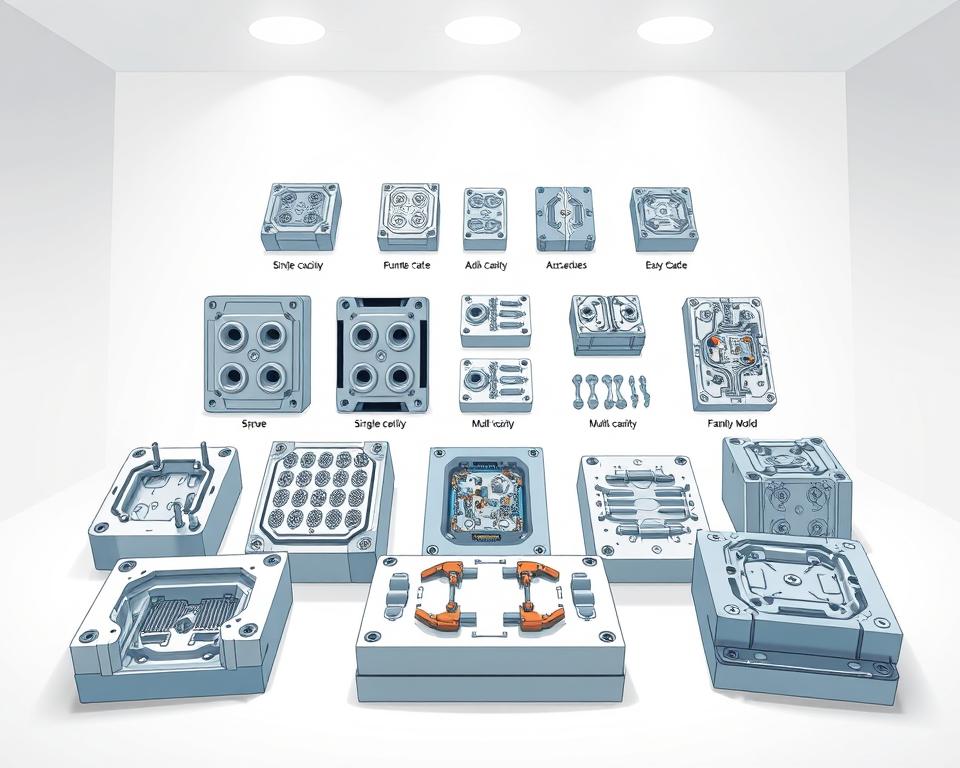China Injection Molding Procurement: Key Steps
The important meeting has recently finished, your new product has been approved, the timeline is aggressive, and the budget is, let’s say, constrained.. And suddenly someone—perhaps your superior or the finance head—says the fateful words that make any project manager’s heart skip a beat: “We should look at sourcing this from China.”
Of course, you acknowledge. On paper, it’s logical. Savings can be substantial. However, your brain is racing with concerns. You know the rumors, don’t you? The nightmare of defective parts, opaque communication, and delayed, off-spec shipments. It can feel like you’re being asked to walk a tightrope between landing a huge cost win for the company and steering your project straight into a ditch.
But here’s the catch. Procuring China injection molding needn’t be a roll of the dice. It’s simply another project with clear steps. And as with any project, success depends on your methodology. It’s less about finding the absolute cheapest quote and more about finding the right partner and managing the process with your eyes wide open. Disregard those scary tales. Here’s a practical playbook to nail it.

Initial Step: Prepare Your Information
Before you mention “supplier” or browse Alibaba, organize your internal data. Truthfully, over fifty percent of offshore sourcing issues originate in an unclear project brief. You can’t expect a factory on the other side of the world to read your mind. Sending a vague request is like asking a builder to quote you for “a house.” You’ll get wildly varied quotes that are useless.
Your RFQ should be bulletproof—clear, detailed, and unambiguous. It’s the cornerstone of your entire effort.
What should you include?
Start with your 3D design files. They’re essential. Use standard formats such as STEP or IGS to ensure compatibility. This is the authoritative CAD geometry.
However, 3D alone won’t cut it. Include precise 2D engineering drawings. Here you specify what 3D can’t show. Examples include tolerances (e.g., ‘25.00±0.05 mm’), material grade, surface finish requirements, and functional callouts. Any seal surfaces or critical hole sizes must be clearly labeled.
Then specify the material. Avoid generic terms like “Plastic.” Nor just “ABS.” Be explicit. Specify SABIC Cycolac MG38 in black, if that’s the resin you need. Why so detailed? Because resin grades number in the thousands. Specifying the exact resin grade ensures you get the strength, flexibility, UV resistance, and color consistency you planned for with plastic mold injection.
A good supplier can suggest alternatives, but you need to give them a clear starting point.
Don’t forget the commercial info. What’s your forecasted annual volume (EAU)? You must specify if it’s a 1K-part tool or a 1M-part production run. The tool design, the number of cavities, and the price per part all hinge on this number.
The Great Supplier Hunt
Now that your RFQ is pristine. who will you target? Online sourcing is global but crowded. Locating vendors is easy; vetting them is the real challenge.
You’ll probably kick off on Alibaba or Made-in-China. They offer breadth but not depth. Use them to build a shortlist, not the final list. Aim for a preliminary list of 10–15 potential partners.
However, don’t end your search there. Perhaps hire a local sourcing specialist. Yes, they take a cut. But a reputable agent brings pre-screened factories. They handle local liaison and oversight. On your first run, this is like insurance. Consider it timeline insurance.
Another classic method? Trade shows. With budget permitting, Chinaplas or similar shows are invaluable. Meeting onsite is unbeatable. Inspect prototypes, interview engineers, and sense their capabilities. And don’t forget the oldest trick in the book: referrals. Ask other project managers in your network. A recommendation from a trusted peer is often worth its weight in gold.
Sorting the Contenders from the Pretenders
With your RFQ dispatched to dozens of firms, estimates roll in. Some will be shockingly low, others surprisingly high. Now, sift through and shortlist 2–3 reliable candidates.
How to proceed? It involves both metrics and gut feel.
Begin with responsiveness. Are their replies prompt and clear? Do they communicate effectively in English? But here’s the real test: Are they asking you intelligent questions? Top vendors will critique and inquire. Example: “Should we add draft here for better ejection?” or “Your tolerance may require extended CMM time—okay?” That’s a huge positive sign. It proves their expertise and involvement. A supplier who just says “No problem” to everything is a walking red flag.
Afterward, verify their technical arsenal. Request their machine list. More importantly, ask for case studies of parts they’ve made that are similar to yours in size, complexity, or material. A small-gear shop won’t cut it for a big housing.
Finally, inspect the factory. This is not optional. Just as you interview hires, audit suppliers. Either visit in person or engage a local audit service. They’ll send a local inspector to the factory for a day. They will verify the company is real, check their quality certifications like ISO 9001, assess the condition of their machinery, and get a general feel for the operation. That small investment can save you thousands.
Transforming CAD into Real Parts
After picking your vendor, you’ll agree on terms, typically 50% upfront for tooling and 50% upon first-sample approval. Now the real fun begins.
Your supplier’s first deliverable is a DFM analysis. Design for Manufacturability (DFM) is essential. It’s their professional review of your CAD. It will highlight potential issues like areas with thick walls that could sink, sharp corners that could cause stress, or surfaces without enough draft angle for clean ejection from the mold. Comprehensive DFM equals a top-tier supplier. It’s a two-way partnership. Together, you tweak the design for best manufacturability.
With DFM sign-off, toolmaking begins. In a few weeks, you’ll see “T1 samples are on the way.” These are your initial mold shots. It’s your first real test.
Be prepared: T1 samples are almost never perfect. It’s par for the course. There will be tiny imperfections, a dimension that’s slightly out of spec, or a blemish on the surface. You’ll provide detailed feedback, they’ll make small adjustments (or “tweaks”) to the tool, and then they’ll send you T2 plastic mold in China samples. You may repeat this cycle a few times. Build buffer time for sample iterations.
Finally, a flawless part arrives. It meets every dimension, the finish is flawless, and it functions exactly as intended. This is your golden sample. You sign off, and it serves as the master quality reference.
Crossing the Finish Line
Getting that golden sample feels like the end, but it isn’t. Next up: mass manufacturing. How can you keep part #10,000 matching your golden sample?
You need a clear Quality Control plan. This often involves a pre-shipment inspection. Use a third-party inspector again. They’ll randomly select parts, compare them to specs and golden sample, and deliver a detailed report. You receive a full report with images and measurements. Once you sign off, you greenlight shipping and the last payment. This simple step prevents you from receiving a container full of scrap metal.
Don’t forget shipping details. Know your shipping terms. Is your price FOB (Free On Board), meaning the supplier’s responsibility ends when the goods are loaded onto the ship in China? Or is it EXW (Ex Works), where you are responsible for picking it up from their factory door? These details have a big impact on your final landed cost.
Overseas sourcing is a marathon. It relies on partnership-building. Treat them like a partner, not just a line item on a spreadsheet. Transparent dialogue, respect, and process discipline win. It’s a challenging project, no doubt. However, armed with this guide, you’ll secure savings and keep high standards intact. You’ve got this.

